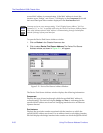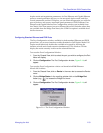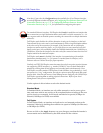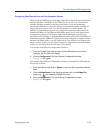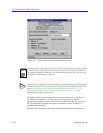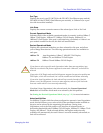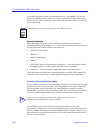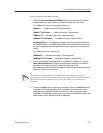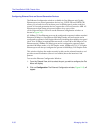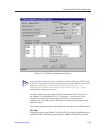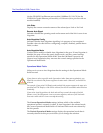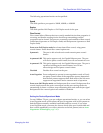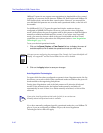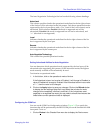
The SmartSwitch 2000 Chassis View
2-36 Managing the Hub
If you have selected a speciÞc operational mode for your 100Base-TX port, the
Advertised Abilities do not apply; the selected Advertised Abilities also do not
restrict the local nodeÕs ability to set up a link with a partner who is not currently
Auto-Negotiating.
Remote Capabilities
When the local node is set to Auto-Negotiation, this Þeld will display the
advertised abilities of the remote link Ñ even if the remote link is not currently set
to auto-negotiate. Possible values for this Þeld are:
¥ 100Base-TX Full Duplex
¥ 100Base-TX
¥ 10Base-T Full Duplex
¥ 10Base-T
¥ Link Partner does not support auto negotiation Ñ auto negotiation is either
not supported by or is not currently selected on the remote port.
¥ Unknown Ñ the link partnerÕs capabilities could not be determined.
When the local node is not set to Auto-Negotiation, this Þeld will be grayed out,
even if the link partner is set to Auto-Negotiation and is advertising abilities.
Setting the Desired Operational Mode
For any 100Base-TX port, you can speciÞcally choose any one of the four available
operational modes, or you can select Auto-Negotiation mode, which allows the
port to negotiate with its link partner to Þnd the highest mutually available
bandwidth. If you select Auto Negotiation mode, you must also choose which of
the portÕs bandwidth capabilities you wish to advertise to the link partner.
For a 100Base-FX port, the selection process is somewhat simpler; Auto
Negotiation for these ports is not supported at this time, so you need only choose
between 100Base-FX standard mode and 100Base-FX Full Duplex. However, you
must still be sure that both link partners are set to the same operational mode, or
the link will be unstable.
NOTE
Auto-Negotiation is not currently supported for 100Base-FX ports.
TIP
If you select Auto-Negotiation at both ends of a link, be sure at least one
mutually-advertised operational mode is available.



